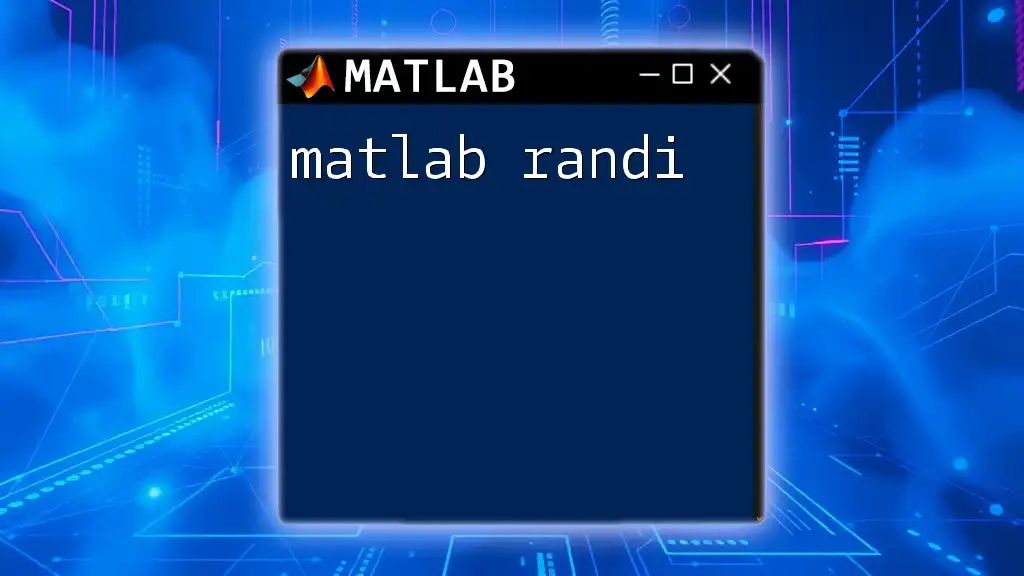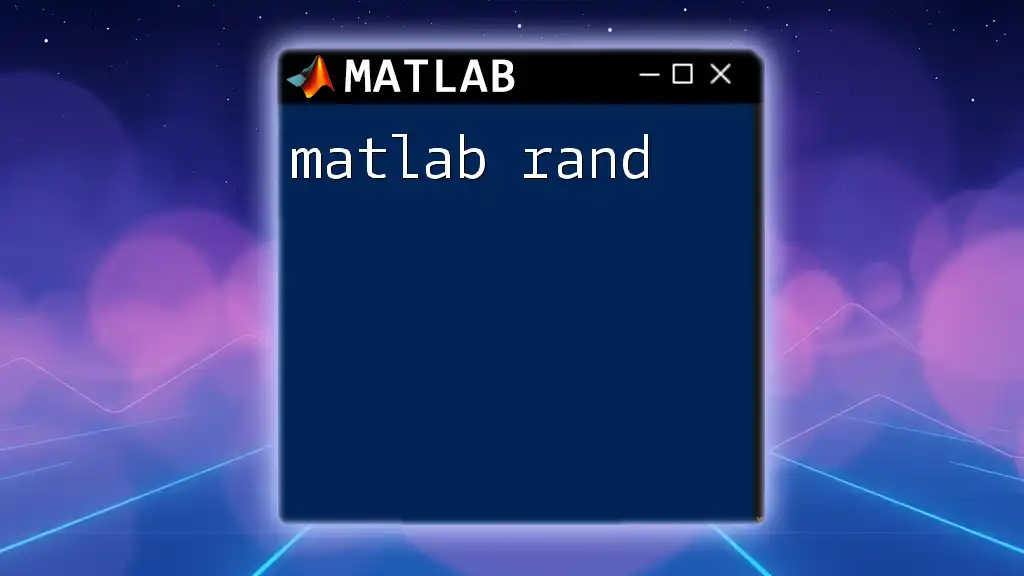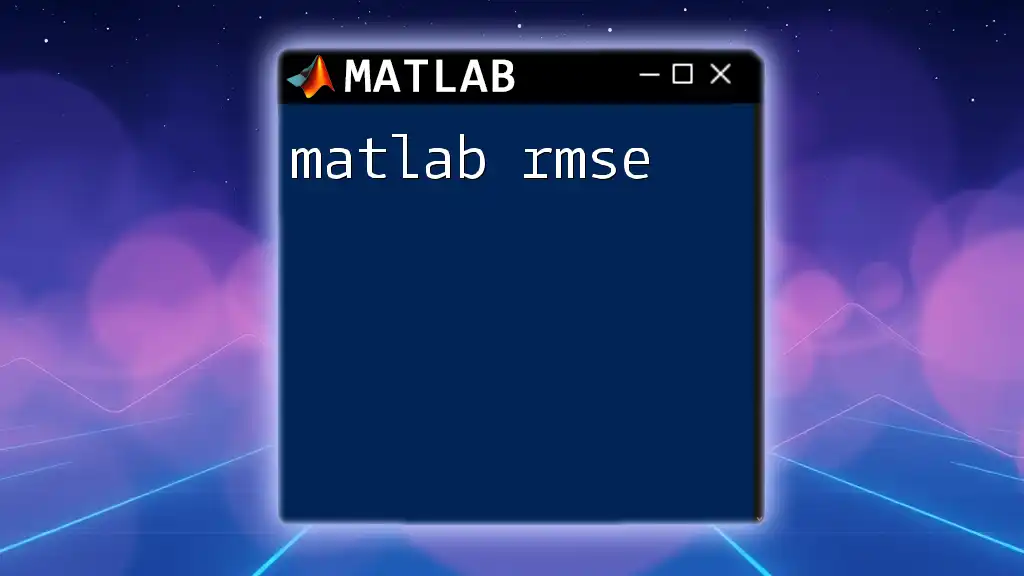In MATLAB, setting a random seed ensures that random number generation is reproducible, allowing you to obtain the same results each time you run your code.
Here’s a code snippet to set the random seed:
rng(42); % Sets the random seed to 42
Understanding Random Numbers in MATLAB
What are Random Numbers?
Random numbers are fundamental in many computational tasks and simulations. In mathematics, random numbers are often referred to as pseudorandom numbers, which are generated via deterministic methods. MATLAB employs algorithms to produce these pseudorandom numbers, allowing for consistent results across different sessions when the same seed is used.
The Role of the Random Seed
A random seed is a starting point to generate a sequence of pseudorandom numbers. By setting a specific seed, you ensure that the sequence generated is reproducible. This is crucial for scientific experimentation and algorithm validation, where consistent results are paramount. Without a controlled seed, the results may vary with each execution, leading to complications in benchmarking and assessments.

How to Set the Random Seed in MATLAB
The `rng` Function
MATLAB provides the `rng` function to control random number generation through seed setting. The syntax is straightforward:
rng(seed_value)
By using this function, you can ensure that your sequence of random numbers will repeat itself whenever you initialize the same seed.
Example 1: Setting a Simple Seed
To illustrate the functionality, consider the example below, where we set the random seed and generate a series of random numbers:
rng(42); % Set the random seed to 42
randomNumbers = rand(1, 5); % Generate 5 random numbers
disp(randomNumbers);
By running this code, you will notice that the output will be consistent each time you execute it with the seed value of 42. For reproducibility in research and development, this capability becomes vital.
Different Seed Initialization Methods
Using `rng` with Seed Types
The `rng` function is flexible and not only accepts a numeric seed value but also different options for initialization, such as '`shuffle`' and '`twister`'.
Example 2: Using 'shuffle'
The 'shuffle' option allows you to set the seed based on the current time, which ensures different outputs each time you run your code. Here's how you use it:
rng('shuffle'); % Set the seed based on the current time
randomNumbers = rand(1, 5);
disp(randomNumbers);
In this case, the output will vary every time the code is executed, as it's based on the momentary system time, providing a more randomized effect for simulations where fixed results aren’t required.
The Impact of Seed Value on Randomness
The choice of seed value significantly impacts the sequence of random numbers generated. Different values will yield different sequences, which can be seen from the following example:
rng(1);
randomNumbers1 = rand(1, 5);
rng(2);
randomNumbers2 = rand(1, 5);
disp(randomNumbers1);
disp(randomNumbers2);
Executing this code will produce two distinct sets of random numbers, demonstrating the variability introduced by the different seed values. This behavior reinforces the concept that reliable results depend on careful seed management.

Best Practices for Using Random Seeds
When to Set a Seed
It’s prudent to set a random seed during critical phases, such as debugging and testing your algorithms. When you need a consistent environment to evaluate performance, controlling the seed eliminates variability related to different runs.
Tips for Reproducibility
For maximum reproducibility, always document the seed used in your experiments. Whether publishing results or working on team projects, noting the seed enhances transparency and makes it easier for others to replicate your findings.
Avoiding Common Pitfalls
One common mistake is to set the seed unnecessarily in large simulations. Doing so may slow down processes that don't require it. Conversely, avoid overusing `shuffle` in testing scenarios, as it can lead to unpredictable results when consistency is necessary.

Practical Applications of Random Seed in MATLAB
Simulations and Monte Carlo Methods
Random seeds are especially significant in Monte Carlo simulations, where randomness underpins statistical modeling. The ability to replicate experiments ensures that simulations can be validated and results can be assessed properly, which is fundamental in fields like finance and physics.
Here’s a concise simulation example:
rng(42); % Set the random seed
simulationResults = rand(1000, 1); % Example simulation
hist(simulationResults, 30); % Plot histogram
By setting the seed, the histogram generated will be consistent across runs, which is essential for comparing performance.
Machine Learning and Random Seeds
In the realm of machine learning, setting the random seed is vital for training models consistently. It allows for repeatable results, crucial for model evaluation.
When preparing training datasets, you can use the seed to ensure that random splits produce the same subsets, facilitating comparisons between different modeling approaches.
Generating Random Samples
Random sampling often requires precision to avoid biases. Here's an example of generating controlled random variation within specified bounds:
rng(10); % Set the random seed
samples = randi([1, 100], 1, 10); % Generate random integers
disp(samples);
By establishing a seed, you guarantee that your sampling methodology is replicable, enhancing the integrity of your data analysis.

Advanced Topics
Custom Random Number Generators
For advanced users, the creation of custom random number generators can be a powerful tool. This involves tailoring the randomness produced to meet specific needs, whether through new distributions or unique properties. Experimentation can yield innovative solutions tailored to niche applications.
Seed Management in MATLAB
Managing random seeds becomes crucial when using MATLAB’s Multithreading capabilities. The `Parallel Computing Toolbox` allows for concurrent random number generation across different threads. Effective seed management ensures that each thread operates independently without producing overlapping results, preserving the integrity of parallel computations.

Conclusion
In summary, understanding the concept of the MATLAB random seed is essential for anyone working in data-driven fields. By controlling the randomness of your number generation, you ensure reproducibility, enhance the integrity of experiments, and facilitate robust model evaluation. Embracing best practices for random seed management empowers you to make the most of MATLAB’s powerful capabilities.

Further Reading and Resources
For those looking to deepen their knowledge, I encourage you to explore additional resources and MATLAB documentation dedicated to random number generation. Engaging with tutorials and community discussions can provide invaluable insights into mastering these concepts effectively.

Call to Action
Join our MATLAB learning community to enhance your skills and stay updated on best practices. Consider enrolling in our upcoming classes designed to help you master MATLAB commands, including the vital role of randomness in computational tasks.

















